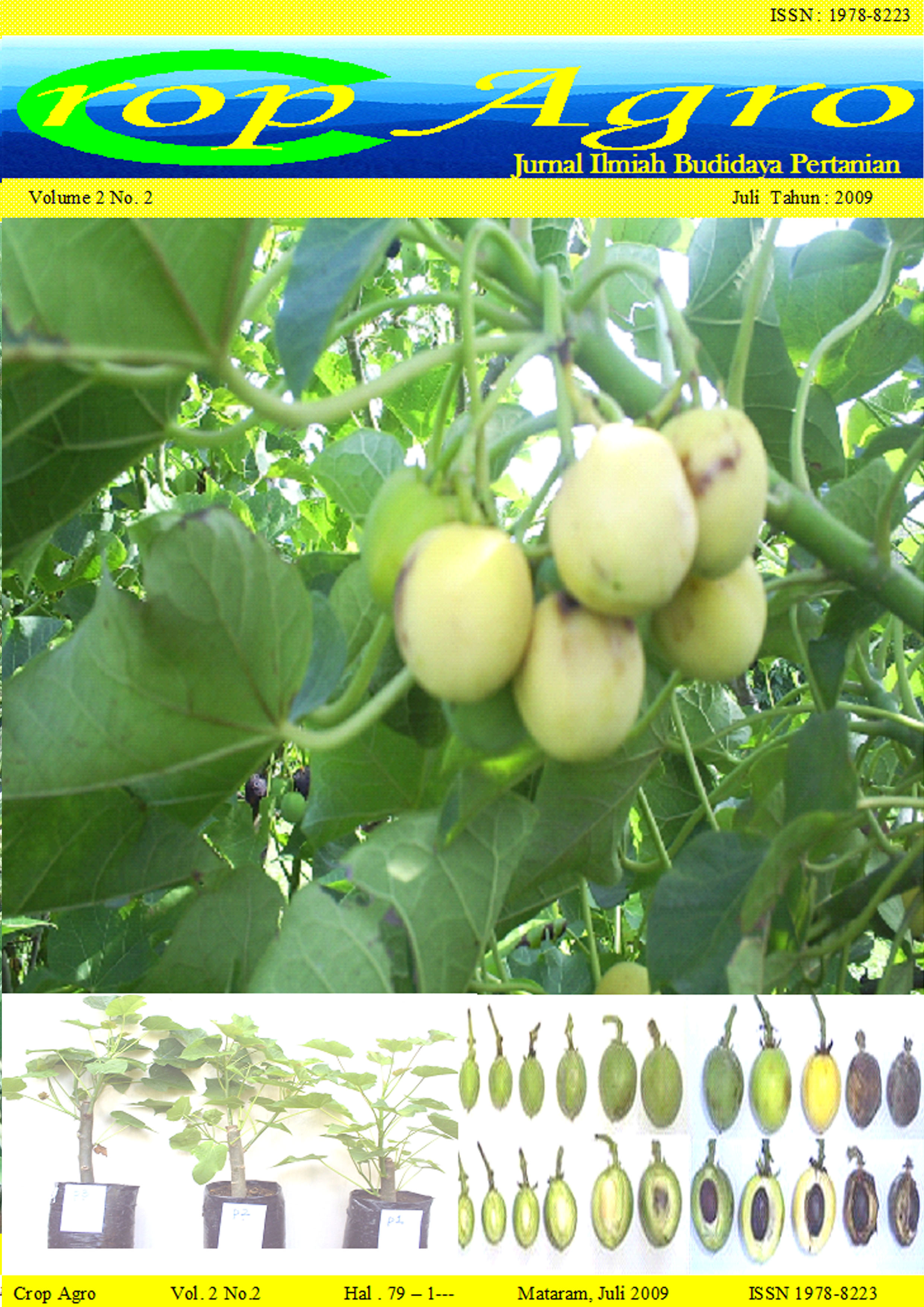PEMANFAATAN INSEKTISIDA NABATI DAN HAYATI UNTUK MENGENDALIKAN HAMA TANAMAN TOMAT YANG DIBUDIDAYAKAN SECARA ORGANIK
THE USE OF BOTANICAL AND BIOLOGICAL INSECTICIDES TO CONTROL PEST ON ORGANIC FERTILIZER TREATMENT OF TOMATTO
Kata Kunci:
NABATI DAN HAYATI, HAMA TANAMAN, THE USE OF BOTANICALAbstrak
ABSTRAK
Hasil penelitian ini menunjukkan bahwa hama-hama yang menyerang tanaman sayuran tomat organik relatif sama dengan jenis hama yang menyerang sayuran secara umum yaitu Aphis sp, Thrips, Aulocophora similis, pengorok daun (Liriomyza sp.) pada stadia vegetaif, dan hama Bemisia tabacci, Heliothis armigera, dan lalat buah pada fase reproduktif. Sebagian besar pengaruh dosis dan saat perlakuan insektisida nabati (nimba) maupun hayati (Bacillus thuringiensis) secara sendiri-sendiri tidak berpengaruh terhadap penekanan populasi dan intensitas serangan hama penting tanaman sayuran tomat organik. Perlakuan kombinasi antara Nimba dan Bacillus thuringiensis cenderung memberikan hasil lebih baik dalam hal penekanan populasi dan intensitas serangan hama tanaman tomat yang dibudidayakan secara organik.
ABSTRACT
The rersult of this investigation shown that the insect pests in organic farming system system of vegetables were the same as generally found in vegetables, such as Aphis sp, Thrips, Aulocophora similis, leaf miner (Liriomyza sp.) at vegetative stage, and Bemisia tabacci Heliothis armigera, fruit fly at reproductive stage of tomatoes. Most impact of doses and time application of botanical (Neem) and biological insecticides (Bacillus thuringiensis) used in this experiment individually were not significant in suppressing the population and attack intensity of major pest on organic vegetables farming system.
From the result of this investigation, it is suggested to use the non-chemical insecticides such as botanical insecticides (Neem) and Biological insecticides (Bacillus thuringiensis) in organic farming system of vegetables, but according to the result it will be better to combine both of them by scheduling rotation of aplication. However, it is needed to find out what combination would be the best other than scheduling rotation, for example mixturing of both agents and aplying them together .
By using the correct doses, time application of botanical and biological insecticides will be useful in Pest Management practices on organic farming system. Therefore, to optimizes the outcome of this experiment, it is necessary to follow up the research on Nische management approaches. By doing this, it is expected to have the conprehenship model of Pest Management in Organic farming system.

